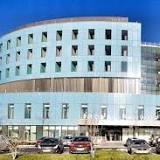Leeds: Antique 'dead' plants dug out for museum climate study

She said: "Our herbarium collection is not only a remarkably beautiful resource, it's also a hugely important and detailed record of how plant life and the natural world in Leeds have evolved over the past 200 years.
"Connecting this amazing collection with people living in the places where these beautiful plants once grew will enable them to connect with their local history, including discovering the different ways people in east Leeds may have used these plants in the past for everything from food to medicine."
Herbarium sheets are a way of preserving plants and flowers on paper and were first made in Italy in the 15th Century. If properly conserved, they can last for hundreds of years.
Stored at the Leeds Discovery Centre, the plants will be studied by people living and working in the east Leeds, where they once grew.
Space2 co-director Paul Barker said he hoped the project would raise awareness about the area's history and environment.
He said: "There is a huge amount of pride and passion in our communities for the green spaces across east Leeds, as well as concern about climate change and biodiversity loss.
"We're really excited about the mix of history, awareness and creativity that this project will realise."
The researchers will also add new specimens to the collection to chart how nature and biodiversity in Leeds has changed over the past 200 years.
The project has been funded by the Esmée Fairbairn Collections Fund.
Listen to highlights from West Yorkshire on BBC Sounds, catch up with the latest episode of Look North or tell us a story you think we should be covering here, external.


 United Kingdom
United Kingdom Argentina
Argentina  Australia
Australia  Austria
Austria  Brazil
Brazil  Canada
Canada  Germany
Germany  Ireland
Ireland  Italy
Italy  Malaysia
Malaysia  Mexico
Mexico  New Zealand
New Zealand  Poland
Poland  South Africa
South Africa  United States
United States 























